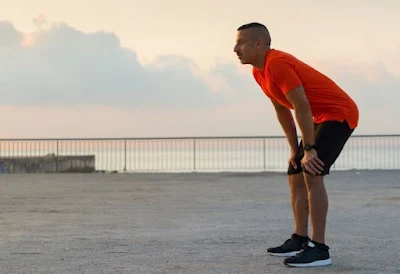Pain in Legs, Feet, and Joints: Causes, Symptoms, and Solutions
Pain in the legs, feet, and joints is a common issue that can affect individuals of all ages. This type of pain can stem from various causes, ranging from lifestyle habits to underlying medical conditions. Understanding the causes and available treatments can improve your quality of life and help you manage or alleviate the discomfort.
Common Causes of Leg, Foot, and Joint Pain
Pain in these areas can be caused by various factors, including:
- Arthritis: Inflammation in the joints, especially common in knees, ankles, and feet, can cause stiffness, swelling, and pain.
- Injury: Sprains, strains, fractures, or other injuries from sports or accidents are common causes of joint and muscle pain.
- Overuse: Repetitive movements or prolonged standing/walking can lead to fatigue and pain, especially in legs and feet.
- Circulatory Issues: Conditions like varicose veins, blood clots, or peripheral artery disease can result in leg pain, particularly during movement.
- Flat Feet or High Arches: These foot conditions can affect alignment and cause stress on the feet and legs, leading to pain.
- Plantar Fasciitis: Inflammation of the tissue connecting the heel bone to the toes, causing heel pain, often felt upon waking up.
- Gout: A type of arthritis where uric acid builds up in the joints, often affecting the big toe, causing severe pain and swelling.
- Neuropathy: Often associated with diabetes, nerve damage can cause pain, tingling, and numbness in feet and legs.
Symptoms of Leg, Foot, and Joint Pain
The symptoms can vary depending on the cause, but common signs include:
- Stiffness: Difficulty in moving joints or legs, often due to arthritis or inflammation.
- Swelling: Joints or muscles may become swollen, especially after an injury or with arthritis.
- Tingling or Numbness: Common in neuropathy, where nerve damage leads to sensations in the legs and feet.
- Aching Pain: Dull or throbbing pain, often associated with overuse or circulatory issues.
- Shooting Pain: Sharp, intense pain, sometimes associated with nerve issues or certain foot conditions like plantar fasciitis.
10 Tips for Managing and Preventing Leg, Foot, and Joint Pain
While some causes of pain require medical treatment, there are lifestyle changes and preventive measures that can help manage and reduce pain:
- Regular Exercise: Low-impact exercises, such as swimming or walking, strengthen muscles and support joints.
- Stretching: Gentle stretching improves flexibility and reduces stiffness, especially in the legs and lower body.
- Proper Footwear: Wear supportive shoes that fit well to prevent strain on feet and legs.
- Healthy Weight: Maintaining a healthy weight reduces stress on joints, particularly in the knees and ankles.
- Rest and Elevate: Resting and elevating legs can help relieve swelling and improve circulation.
- Stay Hydrated: Drinking enough water helps maintain joint lubrication and muscle health.
- Warm-Up Before Activity: Preparing your muscles and joints with a warm-up can prevent strains and injuries.
- Ice and Heat Therapy: Applying ice to reduce inflammation or heat to relax muscles can help relieve pain.
- Massage: Regular massages improve blood flow and reduce tension in muscles and joints.
- Consult a Professional: Seek medical advice if the pain is severe or persistent; physical therapy, orthotics, or medication may be needed.
When to See a Doctor
If you experience any of the following, consult a healthcare professional:
- Pain that persists for more than a few weeks or worsens over time.
- Severe swelling, redness, or warmth in the affected area.
- Difficulty bearing weight or walking due to pain.
- Numbness or tingling that does not go away.
- Joint deformities or signs of infection.
Conclusion
Leg, foot, and joint pain can be challenging, but taking preventive measures and addressing underlying causes can help manage discomfort. If pain persists or interferes with daily life, seek professional help to explore treatment options and improve your mobility and quality of life.



















0 Comments